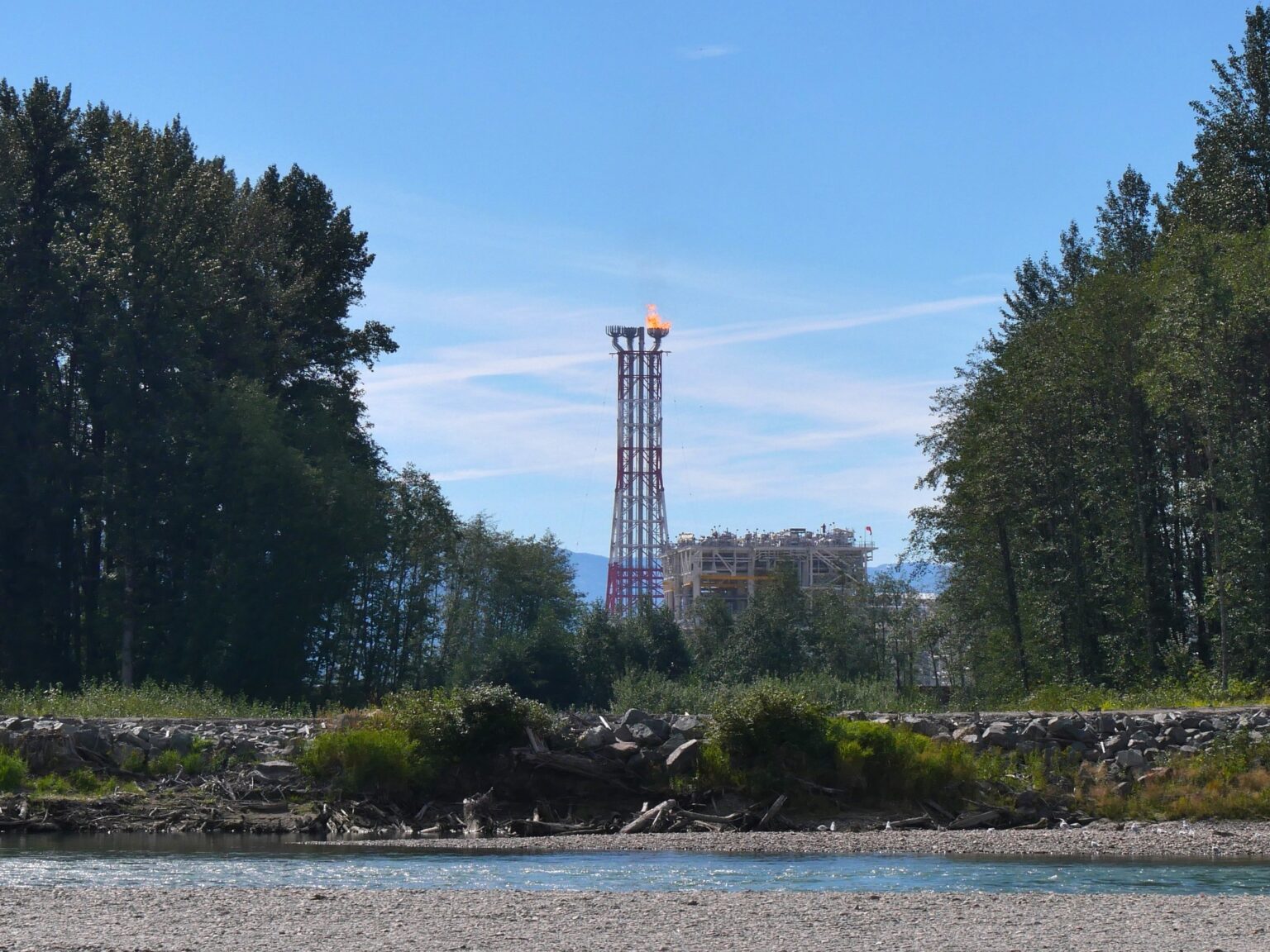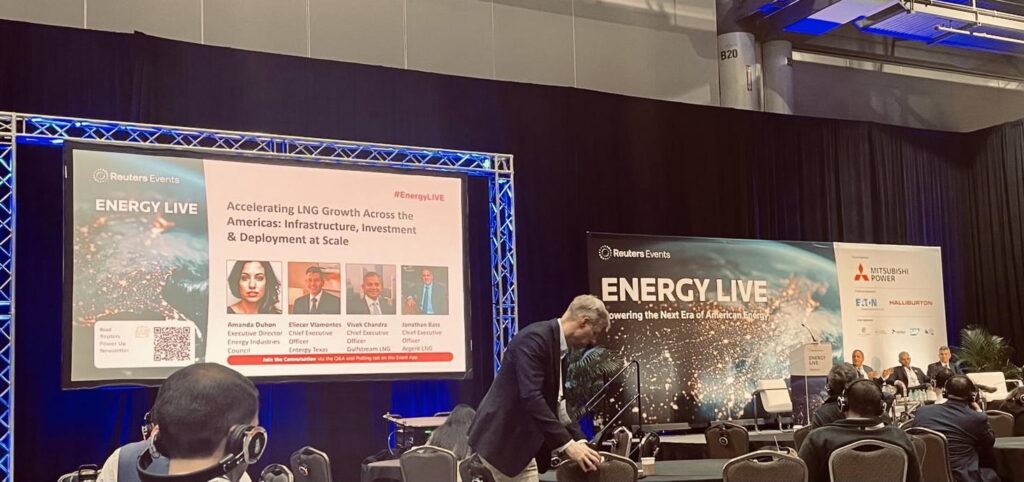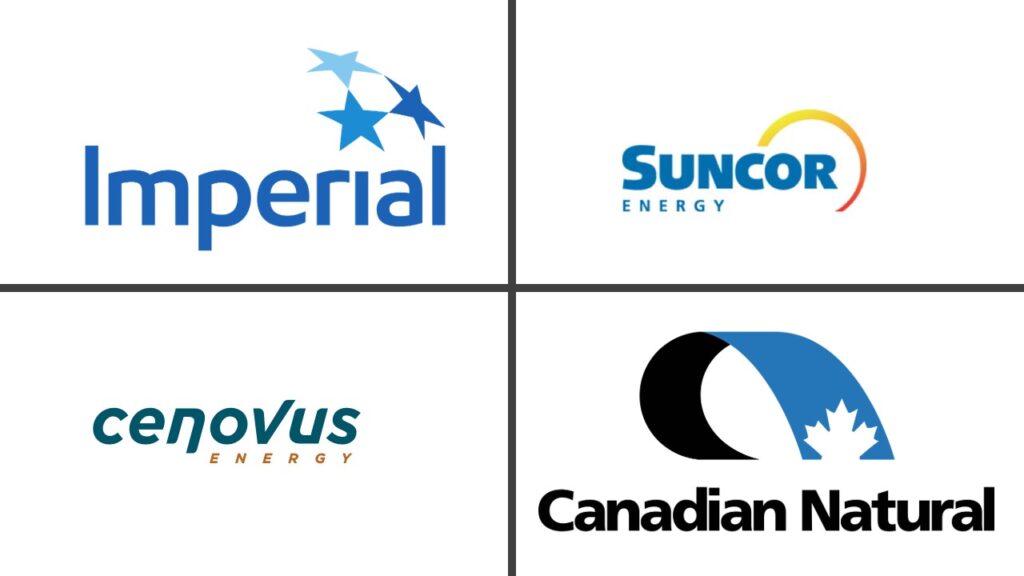Shell’s LNG Canada facility in Kitimat, B.C., shipped its first tanker of Asian-bound liquefied natural gas last month, signaling the beginning of a liquefied natural gas boom in Canada.
The prospect of a surge in fossil fuel exports that could turn the country into the world’s fifth biggest LNG exporter is being cheered on by Prime Minister Mark Carney, who has referred to B.C. LNG facilities as “projects of national significance.” His Liberal government recently passed legislation known as Bill C-5 that could fast-track additional gas exports, including a Phase 2 expansion of Shell’s LNG Canada.
Largely absent from this discussion is the explosion of fracking across northeastern B.C. that will be required to supply these export facilities, a process of gas extraction that consumed over five billion gallons of freshwater across the province in 2021 and may be releasing organic pollutants into local communities that are linked to birth defects and other negative health impacts.
A recent analysis conducted by David Hughes, a renowned earth scientist who spent 30 years with the Geological Survey of Canada, suggests as many as 32,000 new fracking wells will be needed over the next 25 years to meet export demands, all of which will continue to consume depleted freshwater reserves and arable land in the northeastern part of the province.
If this fracking build-out happens, Hughes calculates, it’s highly unlikely Canada can achieve the 2050 net-zero emissions goals it agreed to during the 2015 Paris climate negotiations.
“Personally, I don’t think with the way things are going…that we’re going to meet our net-zero commitments by 2050,” he told DeSmog. “That’s unrealistic at this point.”
Political leaders pushing fossil fuels
Hughes based his prediction on Canada missing its climate targets on the Canada Energy Regulator’s (CER) own net-zero scenarios. According to the regulator’s “global net-zero scenario”, Canada could have leeway to drill 12,500 new fracking wells by 2050 as long as there are sufficient greenhouse gas reductions in the rest of the Canadian economy, Hughes said.
If LNG Canada is the only facility to come online, then, it might still be possible for Canada to meet its net-zero goals, according to Hughes. But political leaders in Victoria and Ottawa are pushing legislation that could enable major new LNG export projects and pipelines.
B.C. premier David Eby earlier this year helped pass Bill 15, the Infrastructure Projects Act, which gives the provincial cabinet authority to override permitting timelines to fast-track the approval of major projects deemed provincially significant.
Although Eby says the new legislation won’t be used to push LNG terminals and pipelines, critics argue Bill 15 grants his cabinet unchecked power and may sidestep environmental oversight, remaining vague about project criteria. There are also significant concerns from Indigenous groups over lack of consultation and possible infringement on rights.
Prime Minister Carney is meanwhile pushing Bill C-5 as a way to reposition Canada’s economic strategies by building new oil and gas pipelines and other industrial export projects.
“Aggressive legislation like Bill 15 and federally Bill C-5 is designed to expedite the approval of new projects,” Hughes said. “Possibly more LNG capacity will be approved than can be accommodated within Canada’s net-zero mandate.”
In that scenario, he argued, we can “forget about” meeting 2050 climate goals.
Major LNG facilities planned for BC
In addition to LNG Canada, there are three major gas export facilities in development along the B.C. coast.
Cedar LNG, also based near Kitimat, will be a floating export facility owned by the Haisla Nation and Pembina, a Calgary-based pipeline company. It’s in the process of building an extension of the Coastal GasLink pipeline to feed its LNG port, which is expected to ship its first tanker of LNG by 2028.
Woodfibre LNG, located on the traditional territory of the Squamish Nation, is primarily owned by Pacific Energy Corporation, a China-based resource development firm with offices in Beijing and Hong Kong.
Ksi Lisims LNG, a development partnership between the Nisga’a Nation and Texas-based gas company Western LNG, is progressing through the regulatory process.
All this bodes poorly for Canada’s efforts to achieve the emissions cuts necessary for a stable climate. “We’ve consumed half of all the oil ever burned by humans in the last 29 years. Our rate of consumption is going up,” said Hughes. “So, we’re probably in serious overshoot.”
All these projects will be getting their gas supply from the same place, the Montney Gas Formation, an area the size of New Brunswick and Nova Scotia combined, which includes the communities of Dawson Creek, Ft. St. John, Blueberry River First Nation and Doig River First Nation in the northeast region of B.C.
The Montney is the largest reserve of gas in Canada, and the majority of gas exports over the next decades will come from it. So far, more than 14,000 wells have been drilled on the B.C. side of the gas deposit. As more export facilities come online, the demand for new wells will increase, putting more pressure on land reserves.
“CER’s two net-zero scenarios would cause disturbance of between 270 and 380 square kilometres of land for roads and drill pads, and it gets much worse if all proposed LNG projects are built,” Hughes said.
Heavy impacts on water resources
As new wells are drilled, more water is going to be needed for the fracking process. In 2024 more than 1.7 million cubic meters of fresh water were extracted for use from northeastern watersheds, from the same rivers people get their drinking water.
Last year the BC Energy Regulator, which oversaw approvals for more than 22 million cubic metres of fresh water in the northeast, issued an advisory to companies that water licenses could be suspended because of drought.
This year the situation hasn’t improved much. Much of the region is still under a level 5 drought advisory, with dozens of fires burning throughout northeast B.C.
“You can’t even fathom [it],” Dr. Ulrike Meyer, a family physician and a resident of Dawson Creek, told DeSmog “It’s like four years of drought. You can’t get hay anymore. Two years ago, they got half the regular hay crop. And then last year was a third of the regular hay crop. My dairy farmer, for the first time, had to buy hay. It never was a problem before. ”
Dr. Meyer has also witnessed an increase in cancers across the region. Provincial health data “show that up here we have a four to six times higher rate of lung cancer, breast cancer, colon cancer, elevated heart disease and lung diseases than the rest of the province,” she said.
With the potential for tens of thousands of new wells in the area around Dawson Creek and the need to draw more water from local watersheds, Dr. Meyer is concerned for the future of not only the environment but human health for those who live within the Montney Shale Gas Basin.
Warnings of serious health risks
Though scientists are still studying the full health impacts of fracking in B.C., one 2021 study found elevated levels of harmful organic pollutants in homes near fracking operations. “There is a growing body of research, across different jurisdictions, reporting associations of [fracking] with adverse health outcomes,” a separate study concluded last year
In a recent op-ed in the Vancouver Sun, Dr. Meyer and her colleague Dr. Tim Takaro, argued that the Eby government isn’t taking seriously enough the health risks associated with oil and gas production.
“We have a growing body of peer-reviewed health research about gas extracted by fracking,” Dr. Meyer and Dr. Takaro wrote. “As fracking has become the dominant source of gas production in B.C. and the U.S., it has been linked to serious health risks and diseases, including impaired fetal growth, pre-term delivery, asthma, cardiovascular disease, childhood cancers, and higher overall mortality in seniors.”
Dr. Meyer and Dr. Takaro are both members with the Canadian Association of Physicians for the Environment or CAPE, and agree more studies are needed to better understand the long-term climate and health effects of LNG expansion.
“There’s going to be heat waves that kill many more people than the 700 who were killed in 2021 in British Columbia,” said Dr. Takaro. “It’s not like this is happening somewhere else. So, my message is to think about your grandchildren and connect the dots.”
Subscribe to our newsletter
Stay up to date with DeSmog news and alerts






